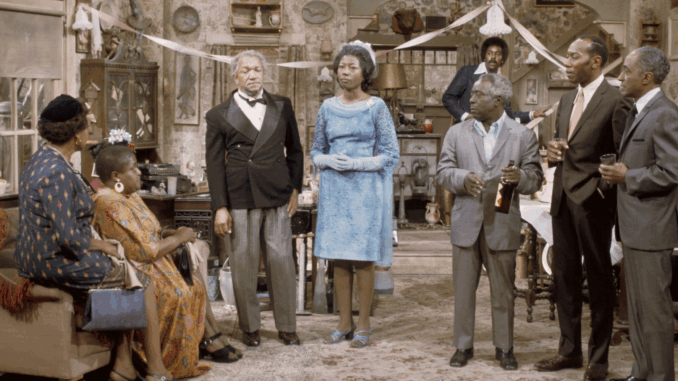
The Legacy of a Junkyard: 5 Reasons Sanford and Son Aged Well (& 5 Reasons It Didn’t)
Forty-five years ago, the doors of the Sanford and Son junkyard closed for good, bringing an end to one of the most influential sitcoms in television history. For six seasons, the show was a hilarious and groundbreaking force, a masterclass in comedy that brought a new kind of family to the small screen. Today, it remains a beloved classic, but viewing it through a modern lens reveals a complex legacy. While many of its core elements are as brilliant and fresh as they were in the 1970s, others feel jarringly out of place in the 21st century. As we reflect on its enduring impact, we can see why some aspects of Sanford and Son have aged with grace, while others have been left behind.
5 Reasons Sanford and Son Has Aged Well
- The Timelessness of a Father-Son Relationship: At its core, the show’s greatest strength lies in the universal, often turbulent, relationship between Fred and Lamont. Their dynamic of bickering, love, and manipulation is a comedy goldmine that is relatable to any generation. The show’s ability to find humor in a father’s over-the-top schemes and a son’s exasperated loyalty is a timeless formula that still works today. Their core bond—the love that underpins every insult—is the heart of the show and remains its most powerful and enduring element.
- The Comedy of Insults and Put-downs: Sanford and Son elevated the art of the insult to a high form of comedy. The rapid-fire banter, especially the brutal verbal sparring between Fred and Aunt Esther, is as sharp and funny as anything on television today. Fred’s famous one-liners and his unique brand of name-calling were delivered with such comedic precision by Redd Foxx that they transcend time. The humor comes not from meanness, but from a genuine wit that feels as fresh today as it did 45 years ago.
- Groundbreaking Representation and Authenticity: For its time, Sanford and Son was revolutionary. It presented a working-class Black family on prime-time television with a level of authenticity and humanity that was unprecedented. It was a sitcom about ordinary life, focusing on family, business struggles, and relationships without relying on tired, one-dimensional tropes. This groundbreaking representation, which paved the way for countless other Black comedies, remains one of its most important and celebrated legacies.
- Its Social Commentary: Beneath the jokes and the junkyard chaos, the show often tackled serious social issues like racism, class struggles, and aging. It addressed these topics with a wit and grace that made them accessible to a mass audience. A famous episode where Fred and Lamont have a run-in with the Ku Klux Klan, for instance, used humor to disarm a serious and dangerous situation, a style of comedy that is still relevant and necessary today.
- The Power of Live Audience Laughter: The show’s use of a live studio audience was a major factor in its enduring appeal. The genuine, unscripted laughter from the audience gave the show an organic energy that a canned laugh track could never replicate. This authenticity makes the humor feel timeless, allowing viewers today to feel like they are right there in the studio, sharing in the joy and spontaneity of the comedic moments.
5 Reasons Sanford and Son Hasn’t Aged Well
- The Homophobia and Sexism: From a modern perspective, some of the jokes on Sanford and Son are jarringly dated. Fred’s frequent use of homophobic slurs, particularly when reacting to “the big one,” is a major issue by today’s standards. Furthermore, the show’s treatment of women, often reducing them to punchlines or objects of ridicule, feels incredibly sexist and problematic.
- The Outdated Stereotypes: While the show was groundbreaking, some of its humor still relied on stereotypes that feel uncomfortable now. The portrayal of certain characters and the way their personalities were simplified for a quick joke can feel cringeworthy, particularly when viewed through a modern lens that demands a more nuanced and respectful approach to character development.
- The Repetitive Plot Formulas: For a show that was so innovative, many of its episodes fell into a predictable formula. Almost every week, Fred would hatch a crazy scheme, get into a fight with Lamont, and then suffer a fake heart attack. For a viewer binge-watching the series today, this repetitive structure can feel predictable and stale, lacking the narrative depth of modern sitcoms.
- The Health Jokes: Fred’s famous fake heart attack, a staple of the show, was a hilarious part of the show’s comedic identity. However, in an era of increased health awareness and empathy for medical conditions, the use of a serious health scare as a running gag can feel less funny and more insensitive. What was a comedic exaggeration then can be seen as a problematic joke now.
- The Dated Fashion and Set Design: While a minor point, the visual aesthetic of the show is a major sign of its age. The 1970s fashion, the drab colors of the junkyard, and the cluttered interior of the Sanford house, while authentic to the era, can make the show feel like a historical artifact rather than a timeless classic for a younger audience.
The Final Verdict: A Legacy in Two Halves
Forty-five years later, Sanford and Son remains a vital part of television history. Its influence on comedy and its role in breaking down racial barriers is undeniable. However, like all artifacts of a bygone era, it carries with it the marks of its time. The show’s core themes of love, family, and survival still resonate, but a modern viewing requires an understanding of its historical context. While some of its jokes feel painfully dated, the genius of its cast, the brilliance of its writing, and the authentic heart of its story continue to endure. It’s a legacy of two halves—a classic that is both timeless and a product of its time.
